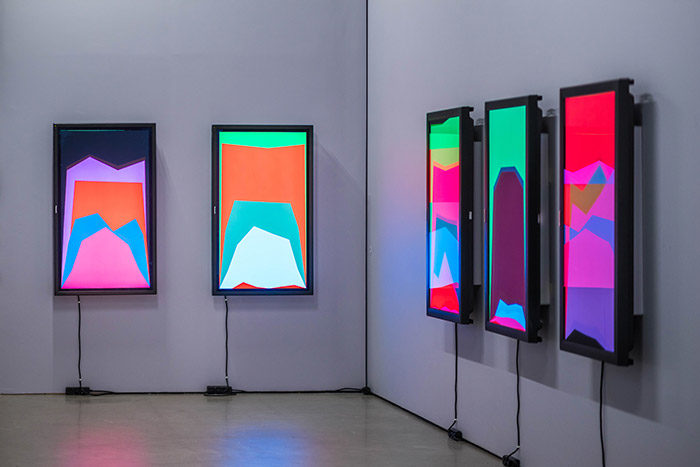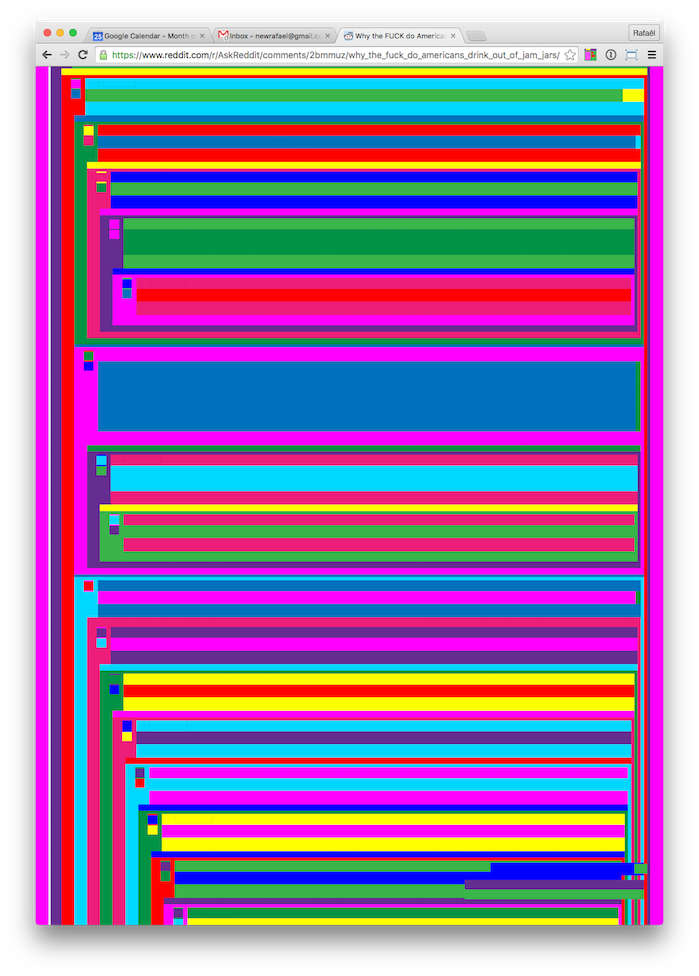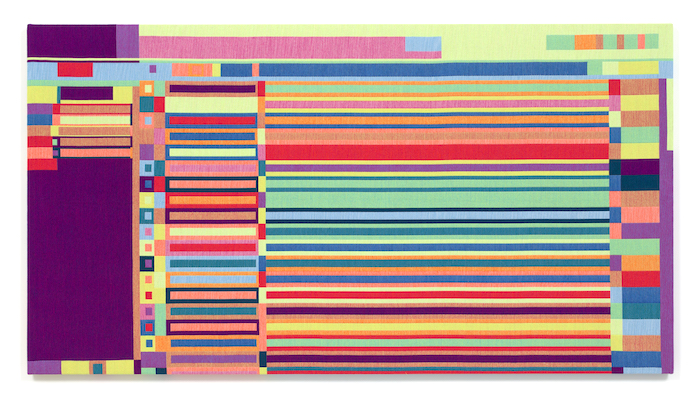Interview for MoMA Magazine
Interview by Paola Antonelli, Amanda Forment & Prudence Pfeiffer for MoMA Magazine.
Photos by Naeem Douglas.
Interview by Paola Antonelli, Amanda Forment & Prudence Pfeiffer for MoMA Magazine.
Photos by Naeem Douglas.
On the occasion of my first painting exhibition at Upstream Gallery in Amsterdam, I sat down with art critic Robert van Altena for the Springvossen podcast. You can listen to the conversation here. (Sorry, Dutch only)
I find it difficult to write about my own work. Conversation is an easier way to formulate thoughts.
For me at least…
I had an in-depth conversation with Yuzo Ono, a haiku poet and writer from Japan.
We talked about the space between internet art, still life paintings, and haiku.
don’t make art on the internet, that will never work
don’t show websites in museums, they belong online
don’t make gallery objects, you’re a web artist
don’t write poetry, you’re not a poet
don’t use blockchain, that’s for investors
don’t paint, that’s for painters
less strategy 👉 more fun
less fear 👉 more joy
less meaning 👉 more energy
less limits 👉 more freedom
less stress 👉 more naps
less opinion 👉 more ideas
less worry 👉 more hope
less doubts 👉 more decisions
a fire?
a door?
a mystery?
an example?
a lightning rod?
a lifestyle?
a religion?
a waterfall?
a storm?
i made something, you should see it!
it is great because
– it represents the core of my being
– i worked on it for a long time
– i did a lot of research
– it will go up in value
– it will make the world a better place
– famous people love it
– i am aware of art history
empty pockets
empty phrases
empty gestures
empty calories
empty stomach
empty vessel
empty promise
empty threat
empty house
empty hard drive
empty fridge
empty wallet
empty table
empty bed
empty horizon
empty nester
empty page
empty time
empty mind
In the Before Times, art and culture were clearly separated by museum walls. Within those museum walls, artists kept asking what art is. Is this art? How about this? And this? As long as it happened inside those walls, the answer was always yes.
Now that art has to operate on the same screen as everybody else, the contextual privilege disappears. If you cover a museum wall with peanut butter, it’s art. But what if you do the same thing on Youtube?
Art is something different. There is culture, there is entertainment, and somewhere outside of that is art. Is that true? Is art different? Is art better?
Does art transcend the crowded realm of decoration and entertainment? Does art last longer? Does art show us our true selves? Does art break convention? When culture breaks convention, is it art?
When writing is exceptional, does it become art? When cooking is exceptional, does it become art? Can breathing be art?
Is art only that what is shown in museums? Does the word art mean anything? I’d like to believe there is something valuable that separates art from the rest but I’m not so sure.
free from expectation
free from distraction
free from approval
free from convention
free from obligation
free from utility
free from compromise
free from agreement
free from competition
free from hierarchy
free from fear
I don’t really understand the impulse to own art. I love empty spaces. I love being in an empty space. It is the most inspiring to me because there is nothing else to do except finding new ideas. Ownership is a prison of obligations. But I need your money so I can make whatever I want. Because you want to own I can create. I don’t judge your cravings, I am happy that you take on the burden of storage. Take it out of my hands so I can make something new.
Please take care of the work and give me some money so I can buy soba noodles and get back to work. Money makes me happy. Lots of money and few things. Money in the bank makes me feel free. I realize i’m not free at all. The more money I have the poorer I feel. The more there is to lose. I made good money this year, more than I ever have. I have no idea what to do with it other than to keep it in a jar and feed it. The money makes me feel safe yet i’m not.
art is the intensification of perception
art is the moment between realizing and understanding
art is research without aim
art is the area between thoughts and feelings
art is the tension between a personality and a material
art is not mysterious because there is no solution
art does not have any reason to exist
art comes from solitary curiosity
the serious artist does more thinking than doing
the serious artist provokes but does not offend
the serious artist knows everyone but doesn’t talk to anyone
the serious artist does not talk about money but has lots of it
the serious artist is a mystery
the serious artist does not give answers
the serious artist does not create
the serious artist does not explain
the serious artist edits
the serious artist knows how to say no
the serious artist doesn’t need you
the serious artist laughs only at the right jokes
the serious artist does not own a tv
the serious artist only travels for work
the serious artist does research
the serious artist enjoys encounters
the serious artist is often alone
the serious artist avoids public transportation
the serious artist rarely smiles
the serious artist is concerned
the serious artist questions authority
the serious artist is comfortable around power
the serious artist is great at dinners
the serious artist dresses in black
“Exhibiting the internet“, an interview with Adina Glickstein for Spike Art.
We talk about domain names, nfts, exhibitions and opportunities.
A conversation with Brandon Stosuy for The Creative Independent.
We talk about process and inspiration.

photo by Petter Cohen
Insomnia, Bonniers Konsthall, 2016
24 September 2016 – 22 January 2017
The group exhibition Insomnia discusses sleeplessness as a cultural symptom. It brings together a group of contemporary artists – Carsten Höller, Katarina Löfström, Julia Feyrer & Tamara Henderson, Kate Cooper, Leif Elggren and Rafaël Rozendaal – and a selection of historical works. The artists set the stage for states of sleep and wakefulness, rest and activity, dream-filled absence and constant accessibility, and the works keep Bonniers Konsthall active around the clock.
Essay by Marti Manen
Functionality, Forget about Functionality
On Rafaël Rozendaal
“The art world is a bit like a video game – you get to know people, you get some coins and then you get to go to the next level, and then you get into the slightly bigger room with less furniture. At first you’re in the side room, then you’re in the main room, then you get in the magazine, etc. The rules are very set, you talk to this person, a biennale, then you get a gold star, then you get upgraded and get to speak to better curators – but then also the critics are harsher… So really, it’s just like Super Mario.”
Rafaël Rozendaal
(More...)
Abstract Browsing is a project that consists of both software and physical objects.
The browser plugin is a free software that anyone can install.
When you turn it on, you can surf the web but all web content is reduced to colored rectangles. It shows you the skeleton of the web. It’s like seeing an X-ray of a building, showing the structural elements.
Web pages are built of many smaller elements, information is organized and categorized. Text, images, tables, things we use every day but are not aware of.
I’m interested how our eyes move across the screen, how websites adapt, learn from your behavior, and change over time. Optimized to grab your attention, to never get boring, to tempt you to click and click and never leave.
Websites are constantly maximizing their efficiency, separate from aesthetic concerns. Websites learn from users by trial and error.
Technology asks new questions about composition. I’m looking for unusual compositions. Anti-compositions, unhuman compositions, compositions that humans would not have created on their own.

I surf the web every day using the plugin. Whenever I find a composition that strikes me, I take a screenshot. Just like digital photography, I take way too many images, thousands and thousands. The real challenge is editing. Making tapestries out of these compositions forces me to choose. Out of all the files I have, I have to choose which ones become objects.
The physicalization (weaving) brings focus. The software is fast and fluid, textile is expensive and slow. It slows me down, it helps me to pause and reflect.
I’ve tried to spend less time on the computer
turning procrastination into productivity
finding beauty in utility
abstraction => removal of information
from natural perception to material reduction
distraction based compositions
infinite information – infinite compositions
the aesthetics of distraction
abstraction is an escape
appropriated abstraction
weaving => mechanical painting
From Wikipedia
“The Jacquard head used replaceable punched cards to control a sequence of operations. It is considered an important step in the history of computing hardware. The ability to change the pattern of the loom’s weave by simply changing cards was an important conceptual precursor to the development of computer programming and data entry.
Charles Babbage knew of Jacquard looms and planned to use cards to store programs in his Analytical engine. In the late 19th century, Herman Hollerith took the idea of using punched cards to store information a step further when he created a punched card tabulating machine which he used to input data for the 1890 U.S. Census.”
ap·pro·pri·a·tion
əˌprōprēˈāSH(ə)n/
noun
the action of taking something for one’s own use, typically without the owner’s permission.
Is appropriation a form of bullying?
Instead of making something, taking something.
The appropriated one is usually not happy.
The villain is more interesting than the hero.
What does contextualize really mean?
– to bring focus
– to isolate
– to show something that is not art to an art audience
– to present something you did not make in an empty room
Appropriation deals with intellectual hierarchy.
Creation looks naïve next to appropriation.